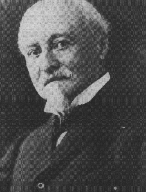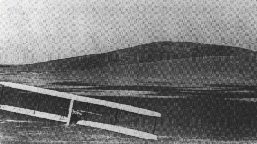While Mr. Chanute was with us, a good deal of time was spent in discussion of the mathematical calculations upon which we had based our machine. He informed us that, in designing machinery, about 20 percent was usually allowed for the loss in the transmission of power. As we had allowed only 5 percent, a figure we had arrived at by some crude measurements of the friction of one of the chains when carrying only a very light load, we were much alarmed. More than the whole surplus in power allowed in our calculations would, according to Mr. Chanute's estimate, be consumed in friction in the driving chains. After Mr. Chanute's departure, we suspended one of the drive chains over a sprocket, hanging bags of sand on either side of the sprocket of a weight approximately equal to the pull that would be exerted on the chains when driving the propellers.
By measuring the extra amount of weight needed on one side to lift the weight on when carrying only a very light load, we were much alarmed. More than the whole surplus in power allowed in our calculations would, according to Mr. Chanute's estimate, be consumed in friction in the driving chains. After Mr. Chanute's departure, we suspended one of the drive chains over a sprocket, hanging bags of sand on either side of the sprocket of a weight approximately equal to the pull that would be exerted on the chains when driving the propellers. By measuring the extra amount of weight needed on one side to lift the weight on the other, we calculated the loss in transmission. This indicated that the loss of power from this source would be only 5 percent, as we originally estimated. But while we could see no serious error in this method of determining the loss, we were very uneasy until we had a chance to run the propellers with the motor to see whether we could get the estimated number of turns.

Octave Chanute (1830-1910)
